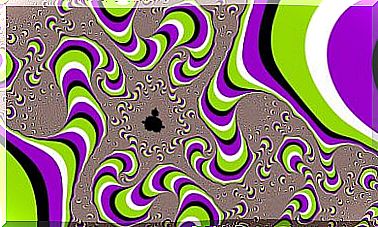Taking An Attitude, What Does It Mean?

What does it mean to take an attitude? Typically, we talk about positive or negative, good or bad attitudes. However, not all social psychology agrees on the definition of the term “attitude”. Taking an attitude goes beyond the simple definition of negative or positive and has several elements whose relationship is ambiguous.
In general, it can be said that one assumes an attitude for a function: obtaining knowledge. Therefore, when we meet a person we do not know, the first thing we do is evaluate them and take an attitude towards them.
The information received, produced by our attitude, allows us to evaluate others and structure the world around us. Our conduct, therefore, can be understood as a form of knowledge that is built starting from experiences, beliefs and feelings.

The factors that determine our attitude
Our attitudes are made up of three elements: beliefs, feelings and behaviors. These are to be understood as the answers that can be given to the stimuli provoked by our own attitudes.
Taking the previous example, if a person’s attitude appears positive in our eyes, when we meet him again, we will experience positive feelings such as joy.
These three elements refer to the cognitive, emotional and behavioral sphere. For example, an easily recognizable distinction is that between stereotype (cognitive component), prejudice (emotional or affective component) and discrimination (behavioral component).
Starting from these three dimensions, the tripartite model of attitudes is born. According to this model, our attitude is determined by how we feel, what we think and the inclination to act we adopt.
However, there are other models that tell us that beliefs also affect our conduct. In other words, the other elements would depend on what we think.
Assume an attitude: relationship between the components
Another important point is the relationship between attitudes and behavior. Whoever affirms that attitudes consist of all three components (cognitive, emotional and behavioral) must deal with the mismatch between beliefs and behaviors.
On many occasions, in fact, we do not act in harmony with our values. For example, we have a very positive opinion of a person, but when he asks us for help we do not help him.
One of the solutions to this discrepancy between beliefs and behaviors can be found in emotions. What we feel will allow us to combine what we believe in with what we do. In this way, if we think that a person is positive for us, we will help him as long as positive emotions are generated when he asks us for help.
Another solution could be to refer to past behaviors. The behaviors we will adopt today will therefore be the same as we have had in the past. We will only help that person if we have already helped them in the past. If not, we will not offer our help.

Other ways of understanding the three components of attitudes
Other models see attitude as a single action that does not take into account the three components mentioned. The unitary definition holds that the attitude allows us to respond to an event in a positive or negative way. The three components would be none other than the three ways in which an attitude manifests itself.
Defining what it means to take an attitude is not easy, which is why we use the most used definition.
It is the categorization of a stimulus produced by a situation in an evaluation dimension based on or generated by three types of information: cognitive, affective / emotional and / or concerning past behaviors or intentions.









